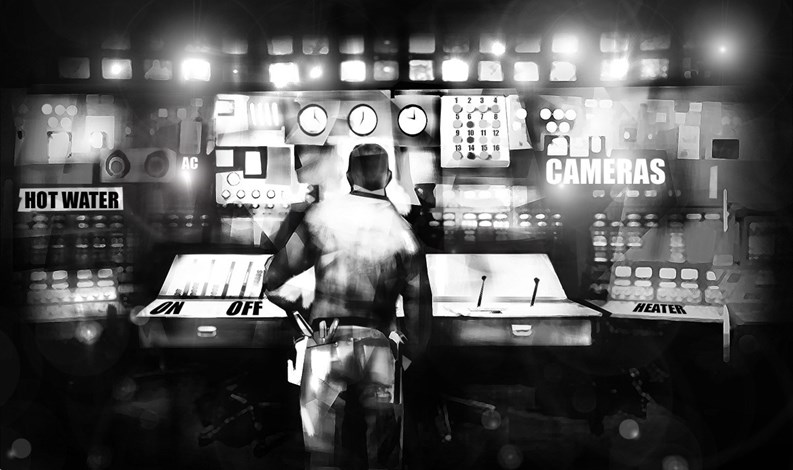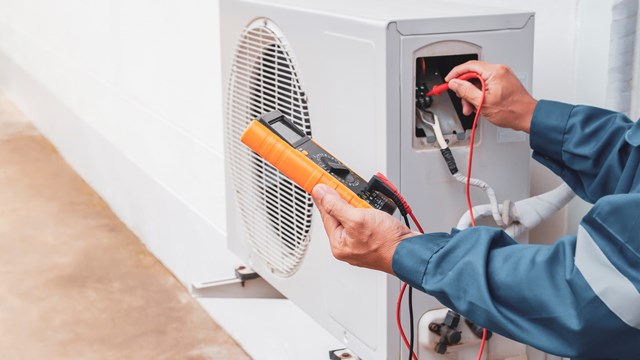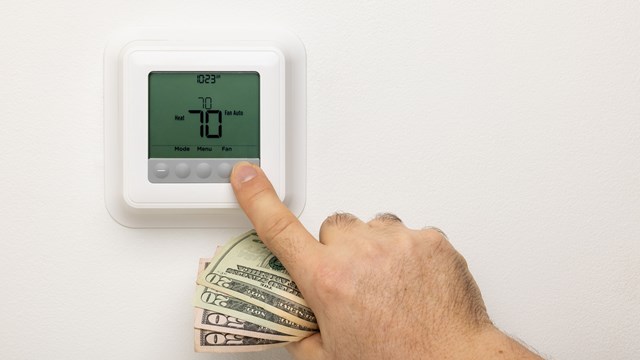Technical advances are being made in just about every area of our lives, and it’s no wonder that residential buildings are taking advantage of what’s available to make life better, simpler and more economical. More and more buildings are being built from the ground up with “intelligent” wiring and integrated operating systems, and existing buildings are getting in on the act as well, upgrading their communications, security, and indoor environmental systems to improve value and convenience for residents.
The Integration Situation
According to Jerry Kestenbaum, president of Queens-based BuildingLink.com and a operation systems integration specialist, “One can talk about ‘integration’ in the sense of integrating different systems with each other so that one system's activities feed into another related system and then back again. Or one can talk about ‘integration’ in the sense of particular systems being integrated seamlessly and intelligently into the day-to-day functioning of the building and its related participants—like residents, staff, maintenance workers, managers, and outside vendors.”
“The value of linked systems—as far as lowering maintenance costs and overall operating costs and providing key benefits for your residents—is amazing,” says Ron Zimmer, president and CEO of the Continental Automated Buildings Association (CABA), an organization that works to educate people about intelligent buildings and systems integration.
Buildings with Brains
While most new residential construction has redundant telecommunications wiring, state-of-the-art security systems, and advanced HVAC systems that can keep residents safe and comfortable planned in from the start, a co-op or condo doesn’t have to be a gleaming new high-rise to be “intelligent.” Older—even prewar—buildings can update and streamline their systems as well. According to organizations like CABA, retrofits account for about 25 percent of the systems integration business, and although truly vintage properties may have certain limitations imposed by their existing wiring or construction, there’s a lot boards and management can still do.
According to Ernest Schirmer, director of technology consulting for Acentech, a Massachusetts-based communications and technology consulting firm, “Technology is maturing rapidly, and many older buildings can be retrofitted. In many cases, the process is like setting up a wireless network. If you’re updating your security system, you may not have to [rewire] the entire building—maybe you can just cover the lobby or the reception level. There’s a broad spectrum of areas that can be improved through technology.”
Some of those areas might include environmental controls like lighting or heat, or adding technology to improve access to the Internet and wireless communication. “We can pre-set lighting, or set [environmental preferences] such that when a person walks into the room, the lighting and the temperature are automatically configured to their preferences,” Schirmer continues. “Those are the kinds of opportunities that present themselves with automation and integration.”
Safety and Savings
According to Lucien Bohbot, founder and CEO of Unitone, a Manhattan-based firm specializing in integrated security systems, “integrated systems” may mean different things to different people, but for board members and managers, it’s about keeping residents safe and saving the building money. That may be why energy consumption and building security are two of the most talked-about areas where integration and technology really helps.
“Our company, for example, was the first to integrate different security features in one handsome, easy-to-use unit,” says Bohbot. “We can integrate a video intercom, an intrusion alarm, as well as fire police and medical alerts. Integrated as well are on-screen messages, card access and CCTV cameras. All these features work together to provide a complete security package.”
“If there is a major issue, like a fire or terror situation,” adds Zimmer, “it’s vital to give tenants the opportunity to get out with greatest amount of speed.” Linking smoke detectors and alarms to cameras to emergency lighting is one way to buy residents more time to evacuate in case of a crisis. “These are things that these integrated systems can bring into the industry.”
Then there’s the issue of energy and environmental control. Electronically controlled HVAC systems can scrub the air in your building and help allergy-prone residents by significantly reducing airborne irritants like pollen and mold. Integrated lighting can automatically adjust light levels at predetermined times of day to cut waste and save on electricity costs. Staff and management can also monitor energy usage over any given period and look for unusual patterns or spikes that might indicate insulation problems or other correctable energy-wasters.
“If you install a system where the super can remotely control and monitor energy in vacant units and common areas, your building can really take control of its energy costs,” Whaling says. “If something isn’t right, the system can shoot an e-mail to the maintenance guy or the manager and they can instantly take a look at it and see if a furnace is out or the water heater is blown.”
One example of a community that made the move to upgrade its security systems early in 2005 is The Bay View Club, a 1,037-family residential condo complex in Bayside, Queens.
According to Maria Gonzalez, president of Nortronics Corporation, a New Jersey-based company specializing in security and systems upgrades—and the company that handled the Bay View Club’s project—the community’s security system was nearly 25 years old, and had long been rendered obsolete by new advances in technology and user interface. In the upgrade/retrofit, the Bay View Club’s existing wiring was rerouted to a central point in each building’s package room and connected to a computer-based alarm system. The new control panels for the systems are about six inches square—instead of six feet, as the old panels were—and allow the concierge to control and monitor the entire building from his or her station.
Looking Ahead
One thing that buildings must take into consideration when deciding whether to commit to the expense and disruption of a security or electrical upgrade or integration project is whether what is being installed today will still be worthwhile a few years down the line. Just because something will save time and money now doesn’t mean that there won’t be a problem later on if an advancement comes along and your wiring or software isn’t flexible enough to accommodate it. With that in mind, it may be worth it to buy a little more system than you need now in order to have the option to evolve and add-on as technology improves and more alternatives become available.
“The biggest issue facing high-rises and condos is expanding for future services,” says Whaling. “All these other things—the systems integration and other improvements—are easy to do once you have the basic system installed. If you have an organization that wants to keep up with any new service options, you have to make sure that the infrastructure is in place to do so. It’s easy to do if it’s designed right.”
According to Dr. Ken Wacks, a home systems industry pioneer and seasoned management advisor, “Whether the building is new or just being rehabbed, it’s a good idea to hardwire support services like HVAC, lighting, security, energy management, intercom, power management, elevators, and so forth. Although there is a growing interest in wireless integration, this isn’t the best solution for everything because there are always dead spots” in a building or neighborhood where a strong wireless signal just isn’t available. “Boards and management need to look at both the technical and legal issues, and consider what restrictions there may be,” says Wacks. “They need to ask a lot of questions.”
Among those questions is whether or not the company your building is working with is installing universal or proprietary systems and technology. If it’s the latter, you may run into difficulty, should you bring in a different company to do upgrades or repairs in the future.
“[Some companies] want you to be a captive customer for all their services,” says Wacks. “Of course, co-op and condo boards are always shopping for best value and may not want to give all their business to one company.”
Zimmer says that over the past two years, the industry has been more open to flexible systems that will allow their services to be compatible with that of their competitors. All the same, it’s important to determine ahead of time how much leeway you’ll have down the road with the equipment and technology you’re purchasing now.
According to Kestenbaum, “Sometimes, the best course of action is to delay a bit. If the choice is between installing yesterday's technology that’s here now, or waiting a few months or a year or two to install tomorrow's technology which is almost here, waiting might be a good choice.”
Money Matters
As with any improvement project, both board members and residents want to know what combining building systems is going to cost them. While an updated HVAC system, for example, can save money on a daily basis and may seem like a no-brainer to everyone on the board, it’s important to separate hype from fact and really examine your building’s options before embarking on a complicated, technical project that could cost quite a bit before all’s said and done.
“The board has to define its goals first,” says Bohbot. “What does it need that it's not getting now? Then, it should investigate the marketplace. Checking out companies’ websites can help, but that's marketing, not reality. You really have to see to believe. Sometimes having all the bells and whistles is not appropriate for a building—and sometimes it is.”
“Start with needs,” agrees Kestenbaum. “What is your building trying to do now that it can't do, or that can be done better, cheaper, or faster? What are the different ways of accomplishing this? Sometimes, technology and integration will provide the answer, but sometimes simple manual procedures can solve some problems as just well. Make sure you are not trying to impose a technology solution for what is really a human problem. Humans have a way of undermining even the most elegant technology solution if they are not supportive of it.”
Once the problems and areas of improvement are identified, says Whaling, “Really, the sky’s the limit, depending on what residents want, and what your building can afford. You can do as much as you want, but you have to be aware that the costs in a retrofit situation could be 20 to 30 percent higher [than in new construction.]”
According to Gonzalez, the costs of upgrading and integrating can vary widely. “It’s hard to put a number on it,” she says. “There are so many variants—the size of the building, and how many areas or systems will be affected, for example. We have to ask what kind of equipment the building already has, what they need, and whether the existing equipment can be used to save money. All of these are factors we use to determine the price of a project.”
Sometimes, Gonzalez continues, a board will have a budget figure in mind and say, “’We have X amount of dollars to upgrade—what can we get for this?’ And then we try to make the most of it. We’ve done $5,000 upgrades, and we’ve done projects that have cost hundreds of thousands of dollars. It all depends on the client’s circumstances—there’s a lot that goes into it, and all of those factors should be looked at and addressed when looking to upgrade a system.”
Integrated, updated systems also add value to individual units. In fact, one of the first questions prospective home buyers will ask these days may be the operating systems inside a building and what intelligent services it employs.
“In our society, condos are increasing in scope, variety and prevalence,” says Zimmer. “As these buildings are going up or being retrofitted, there is a greater understanding that the technology in the building—whether it be energy management systems or security, lighting, audio/visual communications, fiber, broadband—that is what brings value to the building and consumer.”
More and more buildings are considering making an investment in updated, integrated systems, and more and more buyers are expecting state-of-the-art systems in the new buildings going up all over the city. In many cases, by making your building as “smart” as it can be made, you are better preparing for the future. As Wacks says, “It’s just a matter of taking advantage of the technology available today and understanding how to make use of it.”
“It’s important to be familiar with what technologies are out there,” says Whaling, “to get a feel for what the applications are and how they can translate into cost savings, new services, and new amenities. There’s a lot that buildings can do.”
“Many buildings are finally seeing the needs and benefits of upgrading,” says Bohbot. “Today's buildings need systems that are efficient, convenient and offer privacy and security.”
Keith Loria is a freelance writer and frequent contributor to The Cooperator.










Leave a Comment